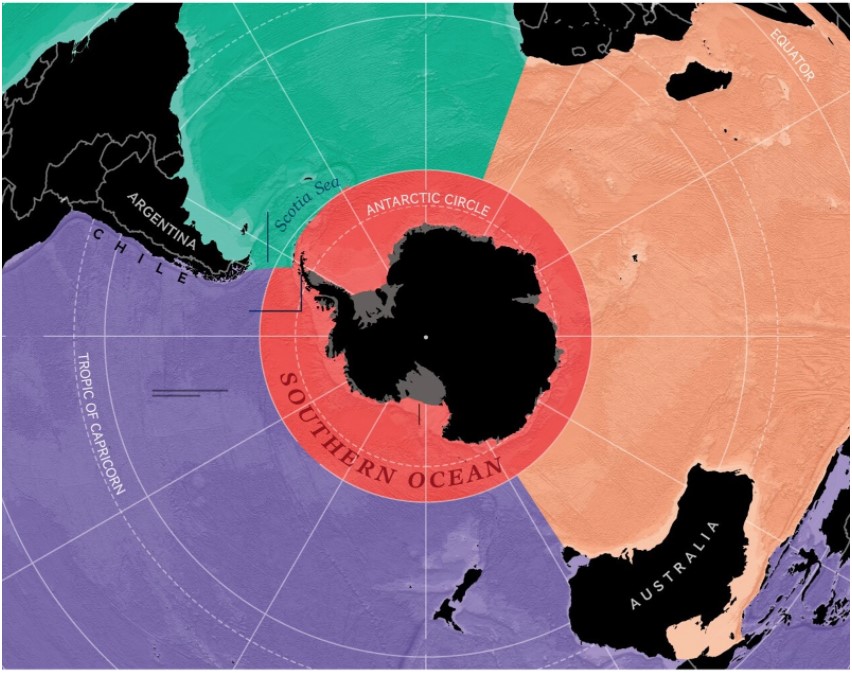We were taught in school that the oceans were the Pacific, Indian, Atlantic and Arctic, now the National Geographic Society who have dedicated themselves among many other things to mapping the world decided to include a fifth ocean in the maps due to its unique characteristics, the Austral. It is the Southern Ocean, a name officially revealed by the National Geographic Society on the recent World Day of the Sea
“The debate among geographers to recognize the Southern Ocean (the body of water that surrounds Antarctica) has dragged on for decades. However, most agreed that this oceanic region has enough distinctive features to be recognized and named for itself.
Anyone who has been to that site will have a hard time explaining what is so fascinating about it, but everyone will agree that the glaciers are bluer, the air is colder, the mountains are more intimidating, and the landscapes are more captivating than anywhere else. place you can go, said Seth Sykora-Bodie, a marine scientist with the National Oceanic and Atmospheric Administration (NOAA) and a National Geographic Explorer.
First recognized by the International Hydrographic Organization (IHO) in 1937, the Southern Ocean lost this designation in 1953, sparking a controversy whose echoes resonate to the present. In 1999, the US Board of Geographic Names adopted the term the Southern Ocean and although it has long been recognized by scientists, the international consensus to officially name it as such did not arrive until two decades later:
As of June 8, 2021, World Oceans Day, the National Geographic Society recognizes the Southern Ocean as the fifth ocean in the world ” reads the publication on the NatGeo website.

Southern Ocean is unique
For years this area has been studied for its unique characteristics, not only from the biological aspect but also from the physical: while other oceans are defined by continents that surround them, the southern ocean is apparently defined by a single current that carries more water than any other in the world, it is cold and dense water that goes to the bottom of the ocean in front of Antarctica helps store carbon in its depths and has a very important impact on the world.

“The Southern Ocean” encompasses unique and fragile marine ecosystems that are home to wonderful marine life, such as whales, penguins and seals,” says National Geographic explorer Enric Sala.
Furthermore, the Southern Ocean also has ecological effects elsewhere. Humpback whales, for example, feed on krill off Antarctica and migrate north to overwinter in very different ecosystems off South and Central America. Some seabirds also migrate in and out. By drawing attention to the Southern Ocean, the National Geographic Society hopes to promote its conservation” they state in the publication.
Now more than ever is the time to learn and be aware of the enormous heritage and wealth that inhabit these waters. The name by NatGeo allows visibility of the area and is a watershed for the education of the new generations and for those who wish to study it independently of the other four oceans of the planet.
